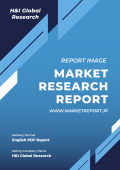1 Report Overview
1.1 Study Scope
1.2 Market Analysis by Type
1.2.1 Global Antisense Oligonucleotide Therapies Market Size Growth Rate by Type: 2018 VS 2022 VS 2029
1.2.2 Without GalNAc-conjugated
1.2.3 With GalNAc-conjugated
1.3 Market by Application
1.3.1 Global Antisense Oligonucleotide Therapies Market Growth by Application: 2018 VS 2022 VS 2029
1.3.2 Genetic Disease
1.3.3 Cancer
1.3.4 Cardiovascular Diseases
1.3.5 Other
1.4 Study Objectives
1.5 Years Considered
1.6 Years Considered
2 Global Growth Trends
2.1 Global Antisense Oligonucleotide Therapies Market Perspective (2018-2029)
2.2 Antisense Oligonucleotide Therapies Growth Trends by Region
2.2.1 Global Antisense Oligonucleotide Therapies Market Size by Region: 2018 VS 2022 VS 2029
2.2.2 Antisense Oligonucleotide Therapies Historic Market Size by Region (2018-2023)
2.2.3 Antisense Oligonucleotide Therapies Forecasted Market Size by Region (2024-2029)
2.3 Antisense Oligonucleotide Therapies Market Dynamics
2.3.1 Antisense Oligonucleotide Therapies Industry Trends
2.3.2 Antisense Oligonucleotide Therapies Market Drivers
2.3.3 Antisense Oligonucleotide Therapies Market Challenges
2.3.4 Antisense Oligonucleotide Therapies Market Restraints
3 Competition Landscape by Key Players
3.1 Global Top Antisense Oligonucleotide Therapies Players by Revenue
3.1.1 Global Top Antisense Oligonucleotide Therapies Players by Revenue (2018-2023)
3.1.2 Global Antisense Oligonucleotide Therapies Revenue Market Share by Players (2018-2023)
3.2 Global Antisense Oligonucleotide Therapies Market Share by Company Type (Tier 1, Tier 2, and Tier 3)
3.3 Players Covered: Ranking by Antisense Oligonucleotide Therapies Revenue
3.4 Global Antisense Oligonucleotide Therapies Market Concentration Ratio
3.4.1 Global Antisense Oligonucleotide Therapies Market Concentration Ratio (CR5 and HHI)
3.4.2 Global Top 10 and Top 5 Companies by Antisense Oligonucleotide Therapies Revenue in 2022
3.5 Antisense Oligonucleotide Therapies Key Players Head office and Area Served
3.6 Key Players Antisense Oligonucleotide Therapies Product Solution and Service
3.7 Date of Enter into Antisense Oligonucleotide Therapies Market
3.8 Mergers & Acquisitions, Expansion Plans
4 Antisense Oligonucleotide Therapies Breakdown Data by Type
4.1 Global Antisense Oligonucleotide Therapies Historic Market Size by Type (2018-2023)
4.2 Global Antisense Oligonucleotide Therapies Forecasted Market Size by Type (2024-2029)
5 Antisense Oligonucleotide Therapies Breakdown Data by Application
5.1 Global Antisense Oligonucleotide Therapies Historic Market Size by Application (2018-2023)
5.2 Global Antisense Oligonucleotide Therapies Forecasted Market Size by Application (2024-2029)
6 North America
6.1 North America Antisense Oligonucleotide Therapies Market Size (2018-2029)
6.2 North America Antisense Oligonucleotide Therapies Market Growth Rate by Country: 2018 VS 2022 VS 2029
6.3 North America Antisense Oligonucleotide Therapies Market Size by Country (2018-2023)
6.4 North America Antisense Oligonucleotide Therapies Market Size by Country (2024-2029)
6.5 United States
6.6 Canada
7 Europe
7.1 Europe Antisense Oligonucleotide Therapies Market Size (2018-2029)
7.2 Europe Antisense Oligonucleotide Therapies Market Growth Rate by Country: 2018 VS 2022 VS 2029
7.3 Europe Antisense Oligonucleotide Therapies Market Size by Country (2018-2023)
7.4 Europe Antisense Oligonucleotide Therapies Market Size by Country (2024-2029)
7.5 Germany
7.6 France
7.7 U.K.
7.8 Italy
7.9 Russia
7.10 Nordic Countries
8 Asia-Pacific
8.1 Asia-Pacific Antisense Oligonucleotide Therapies Market Size (2018-2029)
8.2 Asia-Pacific Antisense Oligonucleotide Therapies Market Growth Rate by Region: 2018 VS 2022 VS 2029
8.3 Asia-Pacific Antisense Oligonucleotide Therapies Market Size by Region (2018-2023)
8.4 Asia-Pacific Antisense Oligonucleotide Therapies Market Size by Region (2024-2029)
8.5 China
8.6 Japan
8.7 South Korea
8.8 Southeast Asia
8.9 India
8.10 Australia
9 Latin America
9.1 Latin America Antisense Oligonucleotide Therapies Market Size (2018-2029)
9.2 Latin America Antisense Oligonucleotide Therapies Market Growth Rate by Country: 2018 VS 2022 VS 2029
9.3 Latin America Antisense Oligonucleotide Therapies Market Size by Country (2018-2023)
9.4 Latin America Antisense Oligonucleotide Therapies Market Size by Country (2024-2029)
9.5 Mexico
9.6 Brazil
10 Middle East & Africa
10.1 Middle East & Africa Antisense Oligonucleotide Therapies Market Size (2018-2029)
10.2 Middle East & Africa Antisense Oligonucleotide Therapies Market Growth Rate by Country: 2018 VS 2022 VS 2029
10.3 Middle East & Africa Antisense Oligonucleotide Therapies Market Size by Country (2018-2023)
10.4 Middle East & Africa Antisense Oligonucleotide Therapies Market Size by Country (2024-2029)
10.5 Turkey
10.6 Saudi Arabia
10.7 UAE
11 Key Players Profiles
11.1 Ionis Pharmaceuticals
11.1.1 Ionis Pharmaceuticals Company Detail
11.1.2 Ionis Pharmaceuticals Business Overview
11.1.3 Ionis Pharmaceuticals Antisense Oligonucleotide Therapies Introduction
11.1.4 Ionis Pharmaceuticals Revenue in Antisense Oligonucleotide Therapies Business (2018-2023)
11.1.5 Ionis Pharmaceuticals Recent Development
11.2 Sarepta Therapeutics
11.2.1 Sarepta Therapeutics Company Detail
11.2.2 Sarepta Therapeutics Business Overview
11.2.3 Sarepta Therapeutics Antisense Oligonucleotide Therapies Introduction
11.2.4 Sarepta Therapeutics Revenue in Antisense Oligonucleotide Therapies Business (2018-2023)
11.2.5 Sarepta Therapeutics Recent Development
11.3 Nippon Shinyaku
11.3.1 Nippon Shinyaku Company Detail
11.3.2 Nippon Shinyaku Business Overview
11.3.3 Nippon Shinyaku Antisense Oligonucleotide Therapies Introduction
11.3.4 Nippon Shinyaku Revenue in Antisense Oligonucleotide Therapies Business (2018-2023)
11.3.5 Nippon Shinyaku Recent Development
12 Analyst’s Viewpoints/Conclusions
13 Appendix
13.1 Research Methodology
13.1.1 Methodology/Research Approach
13.1.2 Data Source
13.2 Disclaimer
13.3 Author Details
| ※参考情報 アンチセンスオリゴヌクレオチド療法は、遺伝子治療の一形態として注目されている技術であり、特に遺伝子発現の制御に利用されます。この療法は、特定のmRNA(メッセンジャーRNA)を標的とするオリゴヌクレオチドを使用し、その結果として特定のタンパク質の合成を抑制または修正することを目的としています。ここでは、アンチセンスオリゴヌクレオチド療法の概念、特徴、種類、用途、そして関連技術について詳しく説明します。 アンチセンスオリゴヌクレオチドは、RNAの構造を持つ短いヌクレオチド鎖であり、特定のmRNAに対して相補的な配列を持っています。この相補的対合により、mRNAの機能が抑制されるか、またはその翻訳を妨げることができます。具体的には、アンチセンスオリゴヌクレオチドはmRNAの二次構造を変更し、リボソームによる翻訳を妨害するか、またはmRNAが分解されるための標的として機能します。 アンチセンスオリゴヌクレオチド療法の一つの大きな特徴は、その特異性です。この療法は、特定の遺伝子に対して非常に高い特異性を持つため、オフターゲット効果が最小限に抑えられます。これにより、異常な遺伝子発現に起因する病状に対して、精密な治療が可能となります。また、分子量が小さく、合成が比較的容易なため、製造過程も効率的です。 アンチセンスオリゴヌクレオチドの種類としては、化学修飾されたオリゴヌクレオチドが一般的です。従来のDNA鎖やRNA鎖を改良することで、安定性や細胞内取り込み能力が向上したものです。たとえば、リン酸の置換、ヌクレオチドの糖部分の改造(2’-O-メチル、2’-O-メトキシエチルなど)及び、ポリマー化や脂質ナノ粒子の利用などが行われています。これらの修飾は、抗分解性の向上とともに、細胞内での効果的な取り込みを促進します。 この療法は疾患に対して広範な応用が期待されています。特に、遺伝性疾患、癌、神経変性疾患などがターゲットとなり得ます。例えば、遺伝性筋ジストロフィーや、特定の遺伝子に由来するがん治療において用いられます。また、既にいくつかのFDA承認の抗ウイルス薬にも適用されています。これらの薬剤は、特定のウイルス遺伝子の発現を抑えることで、その複製を阻害します。 アンチセンスオリゴヌクレオチド療法は、近年、非常に多くの研究と臨床試験が行われています。特に、スピナールアトロフィーをターゲットとした nusinersen(ブランド名:Spinraza)は、FDAにより承認されており、既に多くの患者の治療に用いられています。この治療法は、国家によっても急速に採用されつつあり、患者の生活の質を向上させることが期待されています。 関連技術については、CRISPR/Cas9技術とともに、遺伝子を直接編集する技術が挙げられます。アンチセンスオリゴヌクレオチド療法は、遺伝子の発現を制御する方法として、遺伝子編集技術と補完的な関係にあります。CRISPR/Cas9技術によって遺伝子を直接編集することができる一方で、アンチセンスオリゴヌクレオチドは遺伝子発現をより一時的に、可逆的に調整できます。このため、治療の選択肢として両者を組み合わせたアプローチが注目されています。 今後、アンチセンスオリゴヌクレオチド療法は、より多くの疾患に対する治療法として広がることが期待されています。しかし、実用化には依然としてチャレンジも残されており、さらなる研究と開発が求められています。安全性や効果のさらなる改善、コストの問題、商業化の過程での規制への対処など、多くの課題があります。それでも、アンチセンスオリゴヌクレオチド療法は、ある種の疾患に対する新たな治療の希望として、研究者や医療従事者の注目を集め続けています。治療の多様化とともに、将来的には個別化医療においても重要なプレーヤーとなるでしょう。 |











